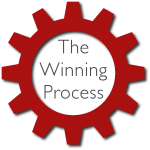
Burnout can be a pretty scary and frustrating thing to go through.  Hopefully you got a chance to read my last post (If you haven’t read it yet, you can here) and you now feel confident in your ability to recognize some of the signs and symptoms of athletic staleness; the precursor to burnout. I also listed some of the more common risk factors agility athletes can encounter while training and competing with their canine pals.
Hopefully you got a chance to read my last post (If you haven’t read it yet, you can here) and you now feel confident in your ability to recognize some of the signs and symptoms of athletic staleness; the precursor to burnout. I also listed some of the more common risk factors agility athletes can encounter while training and competing with their canine pals.
Okay, so we now know how to recognize staleness and burnout, and can come up with a few ideas that will help us avoid it. What happens if we find ourselves experiencing burnout? What if we’re up to our eyeballs in it right now? What can we do? We can quit (sadly this happens way more often than we’d like to admit) or we can start implementing these seven strategies and come back stronger and more motivated than ever.
Strategy 1 – Short-term Goals
Many athletes who experience burnout feel like they’re wandering aimlessly. They don’t have a purpose in either competitions or training. They’ve lost their way. To overcome this and to improve motivation, setting clear, performance based goals for each training session and competition are needed. Not only will goal setting act as a compass, getting you moving in the right direction again, but it will allow you to experience successes as each new goal is attained.
Strategy 2 – Communicate
Social support is huge when trying to overcome staleness and burnout. Being able to share your thoughts and feelings with close friends, colleagues, coaches, and family is crucial to recovery. Don’t keep your frustration, anger, sadness, excitement, or happiness bottled up. Often times sharing with friends can bring humour to situations that might not seem so funny when you’re by yourself.
Strategy 3 – Schedule Breaks
Hello! Of course! Yes agility can be played year-round now. Should you be competing and training non-stop just because you can? Hell No! Rest and recovery are key components to any successful yearly plan. At times it may feel like you need to train and trial all the time just to keep up with the competition, but more is not better. Getting the proper amount of rest improves performance.
This isn’t something that you should leave up to serendipity either (Hey look, there aren’t any trials this weekend). Be smart and schedule down time. Break the season up into smaller phases and pause to catch your breath so you can hit the field with fresh legs and motivation every time.
Strategy 4 – Develop Your Self-Regulation Skills
Athletes with good self-regulation skills are at lower risk of burnout and staleness. Period. If you can control your thoughts, feelings, and behaviours, then it’s highly unlikely that you’ll find yourself experiencing many of the signs and symptoms of burnout. So what are the self-regulation skills we should be working on? Relaxation techniques like meditation and active progressive relaxation. Visualization and Imagery. And, of course, consistently using positive self-talk.
Strategy 5 – Stay Positive
There’s power in positivity. Since you’re already developing your positive self-talk skills where else can you find that positive vibe that will help you overcome burnout? In the friends you keep, the coaches who train you, and the colleagues you compete against. Surround yourself with the love of positivity. Give no quarter to the negative.
Strategy 6 – Manage Your Post-Competition Emotions
Be accountable to yourself and manage your thoughts, feelings, and behaviours. After a rough day at a trial, have a plan to move forward and prepare for the next day. Don’t stew on it.
I know I’ve had my fair share of un-fun car rides back home or to the hotel after a lousy performance kinda day. That’s okay. However you need to find a supportive ear with whom to share. Take a look at your video (if you have it – you really should) and constructively assess what you need to change for the next day. After that go have some fun. Have dinner with friends, watch an inspiring movie or read a good book. Get ready for your next challenge.
Strategy 7 – Take Care of your Body
Where your body goes your mind will follow. If you can’t physically perform your best, it’s easy to start feeling stale. If you want to stay in agility for the long haul and you want to have fun doing it, you must take care of your body. This means getting the proper amount of exercise and rest, eating right, and getting a good night’s sleep on a regular basis.
Using these strategies will give you a good start in recovering from staleness and burnout. Every athlete is unique and there isn’t one solution that will solve everyone’s challenges, however, through hard work, perseverance, and ample rest, finding the fun and enjoyment in agility again, is just around the corner.
The Winning Process
Registration for the 2013 edition of The Winning Process program will be opening shortly and I wanted  to ask your opinion. The course is comprised of six different modules or action elements. Each one with video and some tasks to complete. The last time the program was offered, we did one module a week for a total of six weeks. I was considering moving to one module every two weeks for a 12 week program. Which of these two options would you prefer? Or, do you have another option that you would like to see if you were taking this course? Looking forward to hearing your responses.
to ask your opinion. The course is comprised of six different modules or action elements. Each one with video and some tasks to complete. The last time the program was offered, we did one module a week for a total of six weeks. I was considering moving to one module every two weeks for a 12 week program. Which of these two options would you prefer? Or, do you have another option that you would like to see if you were taking this course? Looking forward to hearing your responses.
Sincerely;
John
Leave A Reply (1 comment so far)
The comments are closed.
Claire
12 years ago
Having taken the 6 week course last year, I think I would have appreciated the same course over a 12 week period.
It would be easier for the students to put strategies into practice, or at least have more time to let the ideas “sink in”.
I loved that course. Thanks !